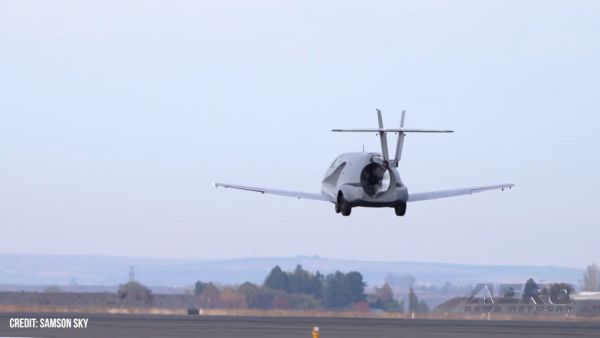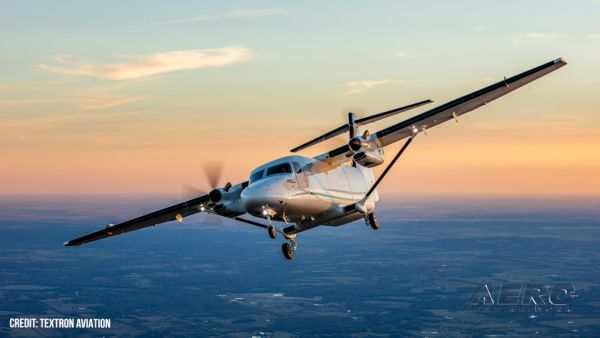Wed, Sep 10, 2003
The facts:
The key elements of the Air Force’s proposal, as presented
in the GAO's reports of September 3 and 4, 2003 to the Congress,
are summarized below:
- The Air Force proposes to lease 100 KC-767A aircraft for 6
years each; the first aircraft would be delivered in August 2006
and the final ones by the end of 2011...
- The Air Force’s report includes an analysis required by
OMB Circular A-94 comparing the net present value of the lease
approach against that of purchasing the aircraft. The Air Force
acknowledges that its analysis indicated that purchase would be
cheaper than leasing by about $150 million in net present value
terms.
...Specifically, the Air Force said that if the aircraft were
purchased at the same rate as planned under the lease, it would
need $5 billion more funding through fiscal year 2006 and more than
$14 billion more for the 6 years reflected in the Future Years
Defense Program. Under the procurement budget plan that the lease
would replace, the Air Force would not begin acquiring new tankers
until fiscal year 2009 and would not have 100 new tankers until
2016, 5 years later than planned through the lease.
- The key justification for the lease, according to the Air
Force, is an urgent need to replace the current fleet of KC-135
aircraft...
- The Air Force plans to award a contract to a special purpose
entity (SPE), a trust to be created under the laws of Delaware,
that will issue bonds to raise sufficient capital to purchase the
new aircraft from Boeing and lease them to the Air Force...
- Office of Management and Budget Circular A-11 requires that an
operating lease meet certain terms and conditions, including a
criterion that the net present value of the lease payments not
exceed 90 percent of the fair market value of the asset at the time
that the lease is initiated... If the fair market value is assumed
to be the cost to buy the aircraft, then the lease payments
represent about 93 percent of the fair market value and would not
meet the requirement.
- If Boeing sells up to
100 comparable aircraft during the term of the contract to another
customer for a lower price than that agreed to by the Air Force,
the government would receive an "equitable adjustment." The report
also states that Boeing has agreed to a return-on-sales cap of 15
percent and that an audit of its internal cost structure will be
conducted in 2011, and that any return on sales exceeding 15
percent would be reimbursed to the government.
- According to the report, if the government were to terminate
the lease, it must
(1) do so for all of the delivered aircraft, and any aircraft for
which construction has not begun,
(2) give 12 months advance notification prior to termination,
(3) return the aircraft, and
(4) pay an amount equal to 1 year’s lease payment for each
aircraft terminated. If termination occurs before all aircraft have
been delivered, the price for the remaining aircraft would be
increased to include unamortized costs incurred by the contractor
that would have been amortized over the terminated aircraft and a
reasonable profit on those costs.
- The government will pay for and the contractor will obtain
commercial insurance to cover aircraft loss and third-party
liability as part of the lease agreement...
- At the expiration of the lease, the Air Force can return the
aircraft to the SPE after removing, at government expense, any Air
Force-unique configurations added by the Air Force after delivery
of the aircraft from the SPE...
- The contractor will warrant that each aircraft will be free
from defects in materials and workmanship and that the warranty
will be of 36 months’ duration...
The GAO says it's a sweet deal for Boeing
One report notes, "The
cost differential between leasing and purchasing was presented by
the Air Force as about $150 million favoring purchase in net
present value terms, although the differential can rise to $1.9
billion favoring purchase, depending upon the assumptions used. For
example, according to the Air Force report to the Congress, had the
Congress provided multiyear procurement authority and had DOD been
able to accommodate that while preserving “program
stability,” the net present value could favor purchase by up
to $1.9 billion."
The GAO also noted that the Air Force hadn't seen this program
as an urgent need in the past; but now it is. Additionally, The
report said that the deal isn't really an 'operating lease,'
because of the high percent of market value transfered. Besides
that, the GAO said the Air Force has been deceptive: "...the report
does not present the total costs of this program, including the
costs to acquire the aircraft at the expiration of the lease or to
maintain the aircraft during the period of the lease." The
deception ran to the net present value analyses, that looked like a
$150 million problem [and that's still a lot of money to
just throw at a favored contractor --ed.], but that could,
under entirely plausible conditions, be a $1,900,000 problem for
the taxpayers to pick up. Explaining just part of the possible
deception (or bad math), the OMB says, a "...1-percentage point
change in the discount rate can cause a change of over $660 million
in the net present value results."
There's too much guesswork to have the Air Force's
hair-splitting bring any degree of confidence. As the report noted,
"if the actual cost increases for the construction of the aircraft
are higher than the assumed cost increases in the Air Force
analysis, the cost of leasing will be higher than the cost
presented in the report to the Congress. The reverse could also be
true." In other words, nobody knows; but the deal, as presented,
seems to be loaded all one way.
More News
Airplane Bounced About 3 Ft Then Touched Back Down And Then, With No Brakes Applied, The Airplane Began Veering To The Left Analysis: The pilot entered the airport traffic pattern >[...]
Aero Linx: British Microlight Aircraft Association (BMAA) The primary focus within all aviation activity is SAFETY. In all aspects of our sport SAFETY must come first, whether it b>[...]
From SnF25 (YouTube Edition): William Wynne Builds Practical Aircraft Engines on the Corvair Platform Seeking an affordable alternative to the traditional aircraft engine options, >[...]
How To Get A Story On Aero-TV News/Feature Programming How do I submit a story idea or lead to Aero-TV? If you would like to submit a story idea or lead, please contact Jim Campbel>[...]
From 2023 (YouTube Edition): Bridge of CiES CiES Inc. is a Bend, Oregon-based designer and manufacturer of modular embedded aircraft systems and sensors. The company’s fuel-l>[...]
 NTSB Final Report: Aviat A1
NTSB Final Report: Aviat A1 ANN's Daily Aero-Linx (07.08.25)
ANN's Daily Aero-Linx (07.08.25) Classic Aero-TV: Fly Corvairs Reliable Engine Alternative
Classic Aero-TV: Fly Corvairs Reliable Engine Alternative ANN FAQ: Contributing To Aero-TV
ANN FAQ: Contributing To Aero-TV Classic Aero-TV: CiES Fuel-Quantity and e-Throttle Systems Praised
Classic Aero-TV: CiES Fuel-Quantity and e-Throttle Systems Praised


